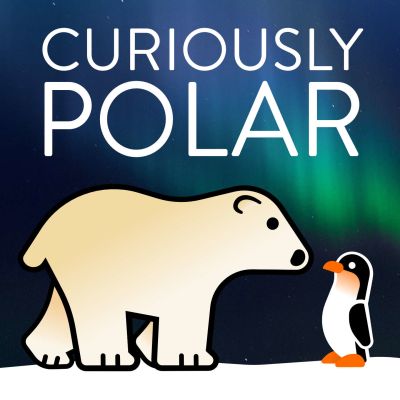The Arctic and the Antarctic are privileged locations for observers interested in understanding how our world is shaped by the forces of nature and the workings of history. These areas have inspired countless humans to undertake epic expeditions of discovery and have witnessed both great triumphs and miserable defeats. As a planetary litmus paper it is at the poles we can detect the effects of natural oscillations and human activities on the global ecosystems.
https://curiouslypolar.com/
165 The Holiday Episode
Watch this on video | Buy us a coffee: Chris / Henry / Mario
It's that time of the year HAPPY HOLIDAYS EVERYONE!! And while we covered some festive topics and traditions in the past, let's loaok at what we are doing for Christmas ourselves.
The Curiously Polar Holiday Book Club (CPHBC):
- Jean-Baptiste Charcot by Dominique Le Brun
- SIKU: Knowing Our Ice - Documenting Inuit Sea Ice Knowledge and Use by Igor Krupnik et al.
- Antarktikos Magazine - #1 Mapping Nature
- The Mapping of Antarctica
- Antarktische Wildnis - Südgeorgien by Thies Matzen and Kicki Ericson
- Master of Desolation by Joseph J. Fuller
- Le Pourquoi-pas dans L'Antarctique by Jean-Baptiste Charcot
- Charcot, le Chevalier du Pole by Marguerite Verdat
- The New York Taxi Back Seat Book by David Bradford
POLAR NEWSREEL:
Nations Adopt Four Goals, 23 Targets for 2030 At the 2022 UN Biodiversity Conference (COP 15) in Montreal 188 nations agreed on an unprecedented package of measures to protect and restore biodiversity and natural ecosystems. The agreement, called the “Kunming-Montreal Global Biodiversity Framework” (GBF), includes four goals and 23 targets for achievement by 2030. The goals include protecting and restoring ecosystems, officially recognizing "nature's contribution to people", several ways of financing the process across borders.
New Polar Code Regulations The new addendum, second phase of the Polar Code, urged Member States to implement voluntary safety measures of the Polar Code on ships not certified under the SOLAS Convention, approved guidance for navigation and communication equipment intended for use on ships operating in polar waters, approved Interim guidelines on life-saving appliances and arrangements for ships operating in polar waters and gave consideration to the possible application of chapters 9 (Safety of navigation) and 11 (Voyage planning) of the Polar Code to non-SOLAS ships and discussing how best to enhance the safety of these ships when operating in polar waters. Additional link
New artifacts extracted from HMS Erebus during 2022 campaign During the 11 days campaign, a team of archeologists performed 56 dives on the wreck of one of Franklin's lost ships, the HMS Erebus. They retrieved exciting and promising artefacts that will surely contribute to forming the picture of the fate of the expedition. The conditions of the wreck are excellent but delicate and this ship will be the initial focus of the work. The other ship, the HMS Terror, is in a deeper, more secure position and will have to wait until the work on the HMS Erebus is finished.
Why is the southern hemisphere stormier than the northern? The Southern Ocean regions have picturesque names: “roaring forties”, “furious fifties” and “screaming sixties”. A study combining observations and models indicates that the global ocean “conveyor belt” and the large mountain ranges in the northern hemisphere are some of the main factors contributing to the difference in storminess between the hemispheres. This work also shows that the southern hemisphere is getting even stormier over time, whereas the north is not. This is consistent with what climate models simulate for a warming world. These changes are important because we know stronger storminess can result in more high-impact events, such as extreme winds, temperatures and rainfall. Additional link
Current State of Sea Ice Cover Rapid changes have been occurring in the Arctic, where the ice coverage has been declining at a substantial rate. In contrast, in the Antarctic the sea ice coverage has been increasing although at a lesser rate than the decreases in the Arctic. In the North at the beginning of winter, ice extent seems to be increasing close to the average from the 2010s. In the South, sea ice extent is particularly low and in an unusual distribution. Additional link
This is an episode of the Curiously Polar podcast
with Chris Marquardt https://chrismarquardt.com/ Henry Páll Wulff: https://henrypall.com/ Mario Acquarone https://www.buymeacoffee.com/polarmario
Listen to all podcast episodes at https://curiouslypolar.com
All video episodes at https://tfttf.com/curiouslypolarvideo
Find us here: Web: https://curiouslypolar.com Twitter: https://twitter.com/curiouslypolar Instagram: https://instagram.com/curiouslypolar
